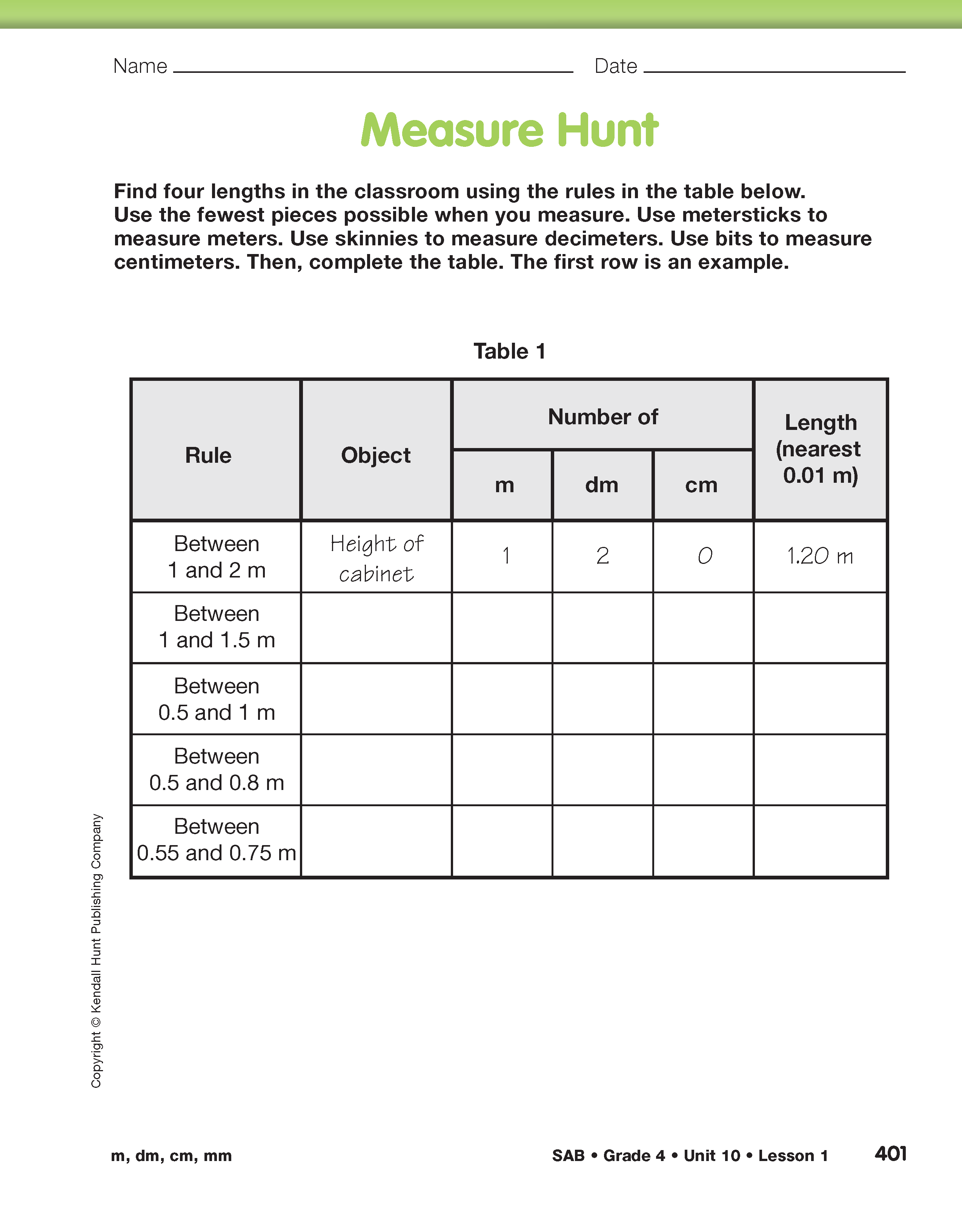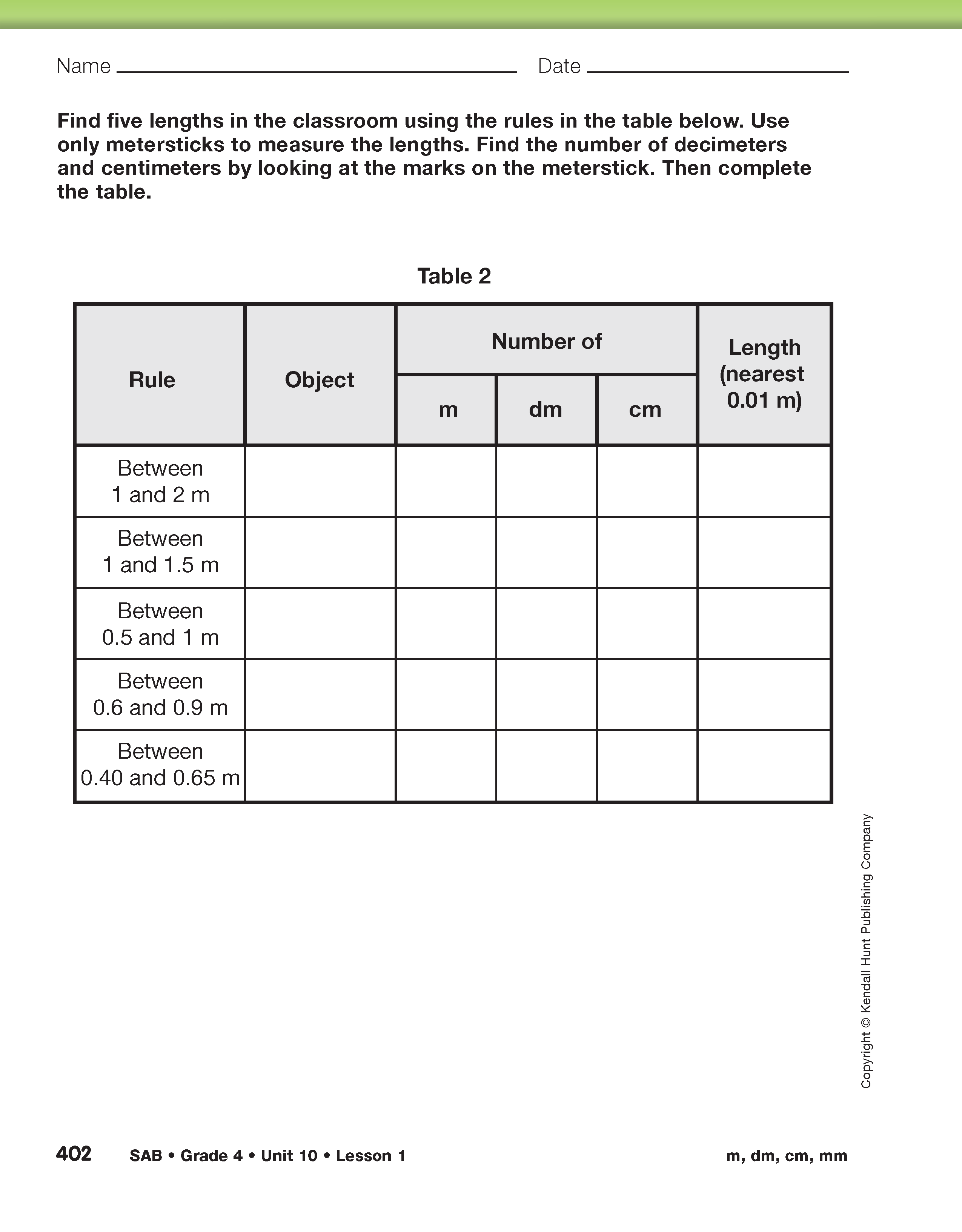m, dm, cm, mm
Est. Class Sessions: 2Summarizing the Lesson
Have students complete the Measure Hunt pages in the Student Activity Book. Students will measure objects in the room to the nearest hundredth of a meter. Each group of students will need 2 metersticks, 8–10 skinnies, 10 bits, and the Measure Hunt pages. First, students measure using metersticks, skinnies, and bits; then record the data on Table 1.
For Table 2, students measure using only metersticks. They do not use skinnies or bits. Before they start, ask a volunteer to show on the meterstick how to find the decimeters (skinnies) and centimeters (bits). On a meterstick, usually the tens (10, 20, 30, etc.) are printed larger than the other numbers. The tens are the decimeters.
As students work on Table 2, circulate and observe whether they are able to measure in meters, decimeters, and centimeters using only metersticks or rulers.
Another way to find out whether students can measure accurately is by setting up a performance assessment. First, identify standard objects that all students can measure simultaneously. For example, ask students to measure any of the following:
- the length and width of their desks
- the length and width of a Student Guide
- the length of a standard paper clip
- the length and width of a piece of paper
- the length of a chalkboard or a bulletin board
Let students choose the appropriate unit of length to measure each object and then have them find the actual measurements.














